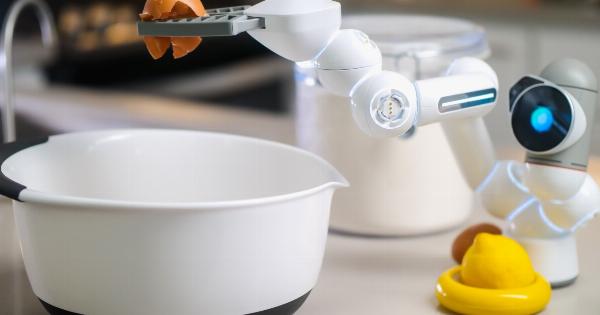Robotic-assisted knee arthroplasty is a cutting-edge surgical technique that combines the precision of robotics with the skills of a skilled surgeon to perform knee replacement surgeries.
This advanced technology has revolutionized the field of orthopedic surgery, improving surgical outcomes and patient satisfaction. In this article, we will explore the benefits, procedure, and potential risks associated with robotic-assisted knee arthroplasty.
Benefits of Robotic-Assisted Knee Arthroplasty
Robotic-assisted knee arthroplasty offers several advantages over traditional knee replacement surgeries. Here are some of the key benefits:.
Precise Alignment
One of the major advantages of robotic-assisted knee arthroplasty is the ability to achieve precise alignment of the implant.
The robotic system uses advanced imaging technology to create a 3D model of the patient’s knee, allowing the surgeon to plan the surgery with utmost accuracy. This ensures proper alignment of the implant, which is crucial for long-term success and longevity of the joint.
Customized Planning
The robotic system enables the surgeon to customize the surgical plan based on the patient’s unique anatomy.
The 3D model created by the robotic system helps in identifying any deformities, bone spurs, or other abnormalities that need to be addressed during the surgery. This personalized approach leads to better outcomes and improved functionality of the knee joint.
Improved Implant Placement
With robotic-assisted knee arthroplasty, the surgeon has better control and precision when placing the implant.
The system provides real-time feedback and guidance, allowing the surgeon to make adjustments as needed to ensure optimal fit and alignment of the implant. This leads to improved joint stability and overall function.
Quicker Recovery Time
Patients who undergo robotic-assisted knee arthroplasty often experience a faster recovery compared to traditional surgeries.
The minimally invasive nature of the procedure, combined with precise implant placement, leads to reduced trauma to surrounding tissues and faster healing. This translates to shorter hospital stays and a quicker return to daily activities.
Procedure of Robotic-Assisted Knee Arthroplasty
The procedure for robotic-assisted knee arthroplasty typically involves the following steps:.
Preoperative Planning
Prior to surgery, the patient undergoes imaging tests, such as CT scans or MRIs, to create a detailed 3D model of the knee joint. The surgeon uses this model to simulate the surgical procedure and develop a personalized plan for the patient.
Surgical Setup
During the surgery, the patient is positioned on the operating table, and the robotic system is brought in. The surgeon uses a combination of manual and robotic techniques to perform the procedure.
Robotic Guidance
The robotic system assists the surgeon by providing real-time feedback and guidance throughout the surgery. The surgeon uses specialized robotic instruments to remove damaged bone and cartilage and prepare the joint for the implant.
Implant Placement
Once the joint is prepared, the surgeon uses the robotic system to precisely place the implant based on the preoperative plan. The system ensures accurate alignment and proper fit of the implant, which is crucial for long-term success.
Postoperative Care
After the surgery, the patient is closely monitored in the recovery room before being moved to a regular hospital room.
Physical therapy and rehabilitation play a crucial role in the recovery process, and patients are typically advised to follow a customized exercise program to regain strength and mobility.
Potential Risks and Complications
While robotic-assisted knee arthroplasty is generally considered safe, like any surgical procedure, it carries certain risks and potential complications. These may include:.
Infection
There is a risk of infection at the surgical site, which may require antibiotics and additional treatment.
Blood Clots
Patients are at risk of developing blood clots, which can be minimized with the use of blood-thinning medications and early ambulation.
Nerve or Blood Vessel Damage
In rare cases, there may be damage to nearby nerves or blood vessels during the surgery.
Implant Failure
Although rare, there is a possibility of implant failure or loosening over time, which may necessitate revision surgery.
Conclusion
Robotic-assisted knee arthroplasty is a state-of-the-art surgical technique that offers numerous benefits over traditional knee replacement surgeries.
From precise alignment and customized planning to improved implant placement and quicker recovery, this technology has transformed the field of orthopedic surgery. While there are potential risks and complications associated with any surgical procedure, the advantages of robotic-assisted knee arthroplasty make it a promising option for patients seeking long-term relief from knee pain and improved functionality.



























